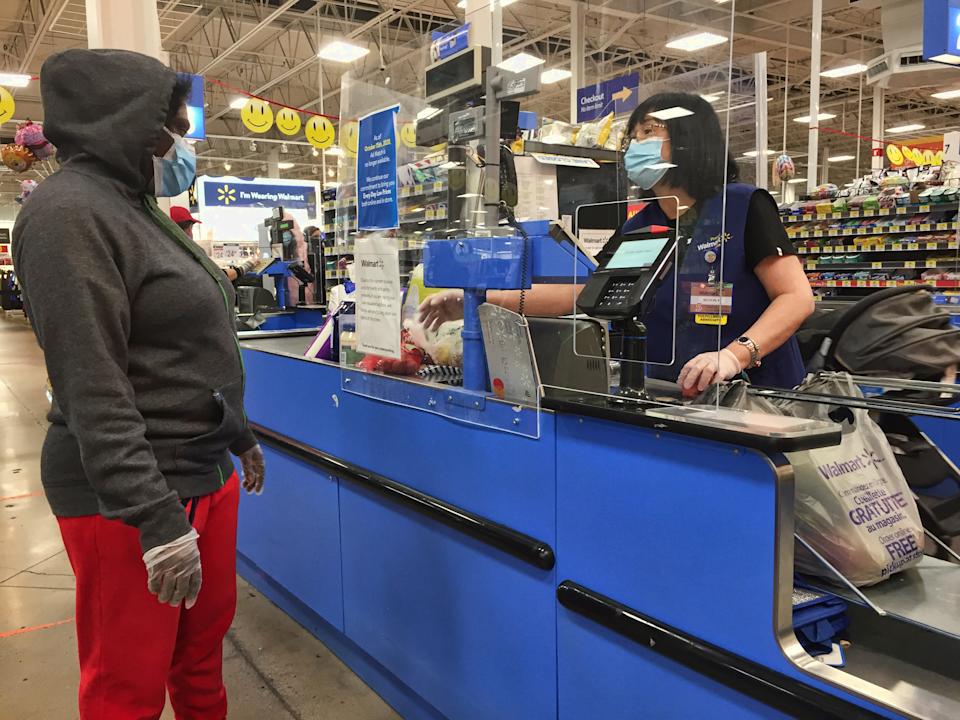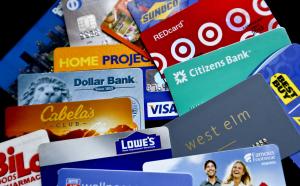Retail CEOs offer up their 4 holiday shopping predictions
Two of the retail industry's heaviest-hitters joined Yahoo Finance’s All Markets Summit: Road to Recovery on Monday to share how the pandemic has reshaped business and leadership.
CEOs Doug McMillon of Walmart and Best Buy’s Corie Barry shared their thoughts and predictions on the future of retail and how it will answer customers’ needs during the busiest season of the year amid a lot of uncertainty over holiday traditions.
“I think people want to celebrate the holidays,” McMillon said. “We'll find a way to celebrate it and it will be a good year. It will be unique but a good year.”
Here’s how the retail experience might look, according to two experts.
#1 - Out-of-stock items will return as long as people don’t hoard

First, it was toilet paper and canned vegetables; next, it was free weights and video games, and this summer it was bicycles and outdoor adventure gear. Demands on certain products have skyrocketed since the onset of the pandemic.
Conceding that inventory will be “choppy” for the foreseeable future, McMillon’s team has dealt with the volatility of demands. Every phase of the pandemic shopping cycle has been felt at Walmart, which is now “seeing in-stock levels improve,” but the retailer has “a ways to go to recover.”
Healthy stock inventories only exist when shoppers don’t allow their fears to get the best of them and panic buy. As the Covid-19 case count spikes and the country heads into what is forecasted as “an elongated—and an exacerbation of—the original first wave,” per Dr. Anthony Fauci, a natural reaction is to repeat the hoarding-like behaviors displayed by some Americans in March and April.
“Today there's been some leveling out but with the case count coming back up, there are some areas we see stock-up behavior again locally,” McMillon said.
#2 - Stores will be empty on Black Friday amid a push for e-commerce

By the time mobs of Black Friday shoppers roll up to stores this November 27 for their annual shopping pilgrimage, the best deals will have been advertised and available for weeks online to discourage crowds.
“What we're trying to avoid is the natural response of lines at stores on Black Friday,” Barry said. “That just can't happen.”
It will be a holiday season of full transparency and visibility, according to Barry, whose mission is to keep Best Buy associates and customers safe and healthy.
The industry has made a shift to elongating the holiday shopping season from November and December to October through January. The early rollout of promotional deals is designed so shoppers can “spread out those sales over more time” and the reduced store volume can “provide a safer experience over time,” according to McMillon.
Walmart is trying to drive shoppers to e-commerce to diffuse the pressure placed on stores to fulfill orders, while keeping everyone safe, McMillon said.
Best Buy is also leaning into the protracted holiday shopping lifecycle and enabling customers to “get the stuff in whatever way they want,” meaning shoppers can take advantage of home delivery, curbside pick-up, or in-store shopping.
#3 - Customers will define what safety means to them

Even when shoppers are greeted by a communal hand sanitizer and a barrier of plexiglass that bisects them and the cashier, some require an additional layer of security.
“It's a combination of things to keep people safe and our associates,” McMillon said.
Shopping in a store like Walmart or Best Buy might be a lifeline for someone in need of an electronic device required for their child to learn remotely or replace a broken household appliance in their home. It’s considered a risk, but creative solutions like curbside pick-up still “gets them the gear they need in order to find maybe that moment of joy in their life,” Barry said.
Barry acknowledged that “COVID is not going away anytime soon” and said that “the customer is in control and the customer is going to remain in control for the foreseeable future.”
Allowing the customer to dictate the terms of how they want to shop in relation to the level of potential exposure they’re comfortable with puts them in control within the guardrails set by the retailers.
“They define safety for themselves, which means they get to be in charge of how they want to shop,” she said.
#4 - Will shoppers have money to spend?

Since the first issuance of stimulus money was issued to certain Americans beginning in April, a second wave of relief has been in question. Now that a second stimulus check isn’t coming, at least until after November 3, how struggling Americans will finance their holiday shopping is in question.
“The lack of stimulus is showing up more so with those unemployed, small businesses, and people [who] need help,” McMillon said.
He cautioned against lumping all customers into one category just because the pandemic is a “shared experience.” Depending on your employment status, you are “having a very different experience.”
“Behavior patterns have changed and people aren't spending as much to travel and take vacations and do things they would have been doing,” McMillon said. “Some of that is impacting the categories that we sell.”
Stephanie is a reporter for Yahoo Money and Cashay, a new personal finance website. She can be reached at stephanie.asymkos@yahoofinance.com. Follow her on Twitter @SJAsymkos.
Read more information and tips in our Spending section






